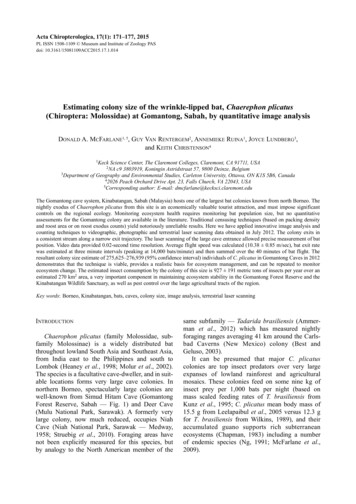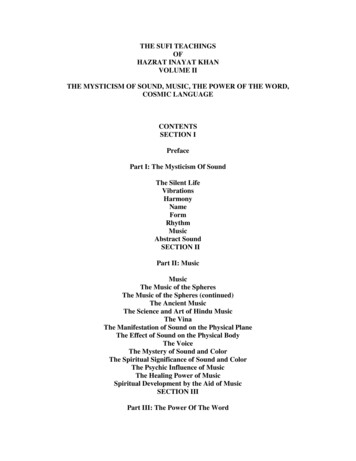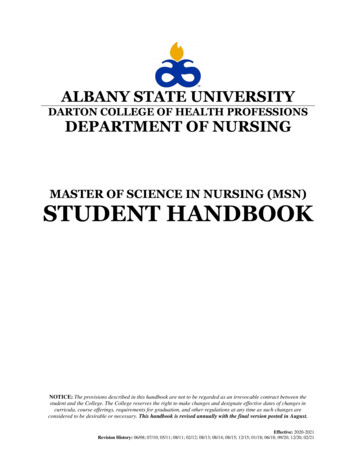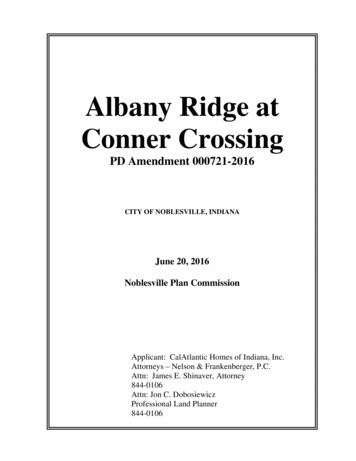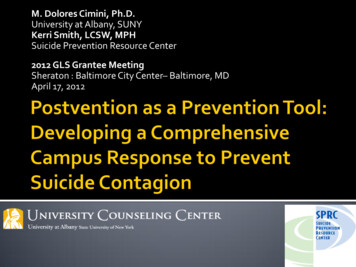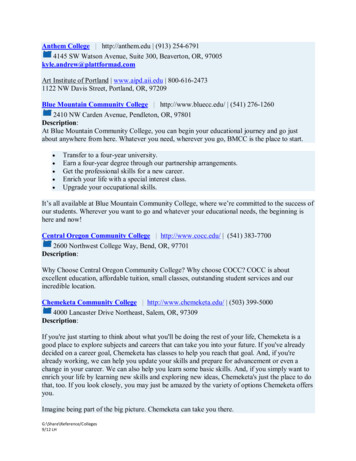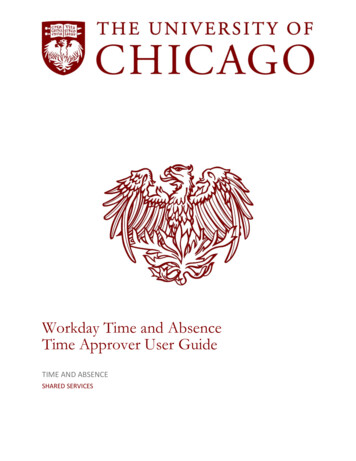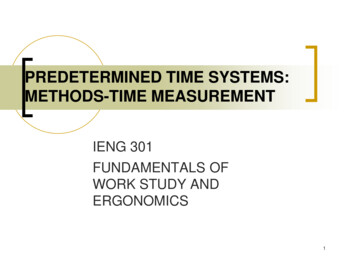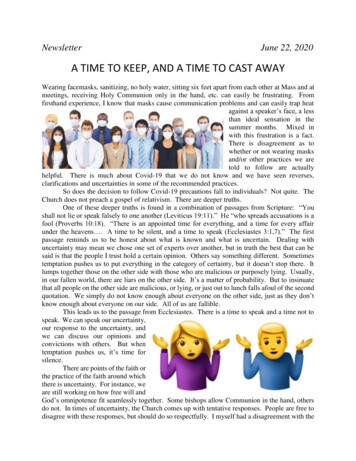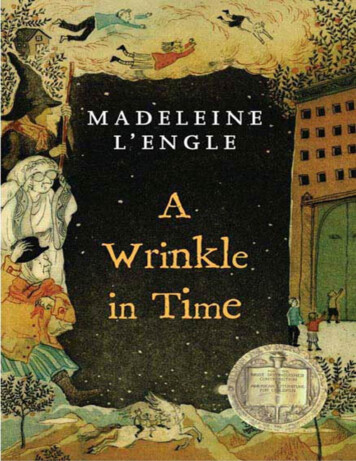
Transcription
A Wrinklein Time
OTHER NOVELS IN THE TIME QUINTETAn Acceptable TimeMany WatersA Swiftly Tilting PlanetA Wind in the Door
A Wrinklein TimeMADELEINEL’ENGLEFARRAR, STRAUS AND GIROUX
Square FishAn Imprint of Holtzbrinck PublishersA WRINKLE IN TIME.Copyright 1962 by Crosswicks, Ltd.An Appreciation Copyright 2007 by Anna Quindlen.All rights reserved. Printed in the United States of America. No partof this book may be used or reproduced in any manner whatsoeverwithout written permission except in the case of brief quotationsembodied in critical articles or reviews. For information,address Square Fish, 175 Fifth Avenue, New York, NY 10010.Library of Congress Cataloging-in-Publication DataL’Engle, Madeleine.A wrinkle in time.p. cm.Summary: Meg Murry and her friends become involved with unearthlystrangers and a search for Meg’s father, who has disappeared while engagedin secret work for the government.ISBN-13: 978-0-312-36755-8ISBN-10: 0-312-36755-4[1. Science fiction.] I. Title.PZ7.L5385 Wr 196262-7203Originally published by Farrar, Straus and GirouxBook design by Jennifer BrowneFirst Square Fish Mass Market Edition: May 200710 9 8 7 6 5 4 3 2 1
For Charles Wadsworth CampandWallace Collin Franklin
ContentsAn Appreciation by Anna Quindlen 1 Mrs Whatsit 2 Mrs Who 3 Mrs Which 4 The Black Thing 5 The Tesseract 6 The Happy Medium 7 The Man with Red Eyes 8 The Transparent Column 9 IT10 Absolute Zero11 Aunt Beast12 The Foolish and the WeakGo Fish: Questions for the AuthorNewbery Medal Acceptance Speech: The Expanding Universe
An AppreciationBY ANNA QUINDLENThe most memorable books from our childhoods are those that make us feel less alone, convince usthat our own foibles and quirks are both as individual as a finger-print and as universal as an openhand. That’s why I still have the copy of A Wrinkle in Time that was given to me when I was twelveyears old. It long ago lost its dust jacket, the fabric binding is loose and water-stained, and the softand loopy signature on its inside cover bears little resemblance to the way I sign my name today. Thegirl who first owned it has grown up and changed, but the book she loved, though battered, is stillmagical.Its heroine is someone who feels very much alone indeed. Meg Murry has braces, glasses, andflyaway hair. She can’t seem to get anything right in school, where everyone thinks she is strange andstupid. And she runs up against some real nastiness at a young age in the form of all those snide looksand comments about her father, a scientist who seems to have mysteriously vanished—or, towngossip has it, run off with another woman.But Meg doesn’t know real evil until she sets out on a journey to find her father and bring himhome, along with her little brother, Charles Wallace, and a boy named Calvin. As they transcendtime, space, and the limitations of their own minds, they get help from individuals of great goodness:Mrs Whatsit, Mrs Which, Mrs Who, the Happy Medium, and Aunt Beast. But the climax of theirjourney is a showdown with IT, the cold and calculating disembodied intelligence that has cast ablack shadow over the universe in its quest to make everyone behave and believe the same.If that sounds like science fiction, it’s because that’s one way to describe the story. Or perhaps youcould call it the fiction of science. The action of the book, the search for Meg and Charles Wallace’smissing father, relies on something called a tesseract, which is a way to travel through time and spaceusing a fifth dimension. Although there’s even a little illustration to make it easier to visualize, I stillam not certain I do. Of course, Meg, who is so bright she can do square roots in her head, doesn’tentirely understand it either. “For just a moment I got it!” she says. “I can’t possibly explain it now,but for a second I saw it!”The truth is, I’m not a fan of science fiction, and my math and physics gene has always been weak.But there’s plenty in the book for those of us predisposed toward the humanities as well. Mrs Who,who remedies her language deficit by using the words of others to explain herself, quotes Dante,Euripides, and Cervantes, to name just a few. When Meg is trying to keep IT from invading her brain,she realizes the multiplication tables are too rote to do the trick and instead shouts out the opening ofthe Declaration of Independence: “We hold these truths to be self-evident, that all men are createdequal.” IT retorts that that’s the point: “Everybody exactly alike.” Meg replies triumphantly, “No!Like and equal are not the same thing at all!”Madeline L’Engle published Wrinkle in 1962, after it was rejected by dozens of publishers. Andher description of the tyranny of conformity clearly reflects that time. The identical houses outsidewhich identical children bounce balls and jump rope in mindless unison evoke the fear so manyAmericans had of Communist regimes that enshrined the interests of state-mandated order over therights of the individual. “Why do you think we have wars at home?” Charles Wallace asks his sister,
channeling the mind of IT. “Why do you think people get confused and unhappy? Because they all livetheir own separate individual lives.” He tells Meg what she already knows from her own everydaybattles: “Differences create problems.”But while L’Engle’s story may have originally been inspired by the gray sameness of thoseCommunist countries, it still feels completely contemporary today, except maybe for Meg’s desire fora typewriter to get around her dreadful penmanship. The Murry home is fractured by Mr. Murry’smysterious absence and Meg’s “mother sleeping alone in the great double bed” Calvin may look likea golden boy, but his family barely notices he’s alive. Even more timeless is the sense Meg has ofherself as someone who doesn’t fit in, who does “everything wrong.” Conformity knows no time orplace; it is the struggle all of us face, to be ourselves despite the overwhelming pressure to be likeeveryone else. Perhaps one of the most compelling and moving descriptions of that internal battlecomes near the end of the book, when Mrs Whatsit tells the children that life, with its rules, itsobligations, and its freedoms, is like a sonnet: “You’re given the form, but you have to write thesonnet yourself. What you say is completely up to you.”On its surface this is a book about three children who fight an evil force threatening their planet. Butit is really about a more primal battle all human beings face, to respect, defend, and love themselves.When Meg pulls the ultimate weapon from her emotional arsenal to fight, for her little brother and forgood, it is a great moment, not just for her, but for every reader who has ever felt overlooked,confused, alone. It has been more than four decades since I first read A Wrinkle in Time. If I couldtesser, perhaps in some different time and place I would find a Meg Murry just my age, a grownwoman with an astonishing brain, a good heart, and a unique perspective on how our differences arewhat makes life worth living. Oh, how I would like to meet her!
ONEMrs WhatsitIt was a dark and stormy night.In her attic bedroom Margaret Murry, wrapped in an old patchwork quilt, sat on the foot of her bedand watched the trees tossing in the frenzied lashing of the wind. Behind the trees clouds scuddedfrantically across the sky. Every few moments the moon ripped through them, creating wraithlikeshadows that raced along the ground.The house shook.Wrapped in her quilt, Meg shook.She wasn’t usually afraid of weather.—It’s not just the weather, she thought.—It’s the weather ontop of everything else. On top of me. On top of Meg Murry doing everything wrong.School. School was all wrong. She’d been dropped down to the lowest section in her grade. Thatmorning one of her teachers had said crossly, “Really, Meg, I don’t understand how a child withparents as brilliant as yours are supposed to be can be such a poor student. If you don’t manage to doa little better you’ll have to stay back next year.”During lunch she’d rough-housed a little to try to make herself feel better, and one of the girls saidscornfully, “After all, Meg, we aren’t grammar-school kids anymore. Why do you always act likesuch a baby?”And on the way home from school, walking up the road with her arms full of books, one of the boyshad said something about her “dumb baby brother.” At this she’d thrown the books on the side of theroad and tackled him with every ounce of strength she had, and arrived home with her blouse torn anda big bruise under one eye.Sandy and Dennys, her ten-year-old twin brothers, who got home from school an hour earlier thanshe did, were disgusted. “Let us do the fighting when it’s necessary,” they told her.—A delinquent, that’s what I am, she thought grimly.—That’s what they’ll be saying next. NotMother. But Them. Everybody Else. I wish Father—But it was still not possible to think about her father without the danger of tears. Only her mothercould talk about him in a natural way, saying, “When your father gets back—”Gets back from where? And when? Surely her mother must know what people were saying, must beaware of the smugly vicious gossip. Surely it must hurt her as it did Meg. But if it did she gave nooutward sign. Nothing ruffled the serenity of her expression.—Why can’t I hide it, too? Meg thought. Why do I always have to show everything?The window rattled madly in the wind, and she pulled the quilt close about her. Curled up on one ofher pillows a gray fluff of kitten yawned, showing its pink tongue, tucked its head under again, andwent back to sleep.Everybody was asleep. Everybody except Meg. EvenCharles Wallace, the “dumb baby brother,”who had an uncanny way of knowing when she was awake and unhappy, and who would come, somany nights, tiptoeing up the attic stairs to her—even Charles Wallace was asleep.How could they sleep? All day on the radio there had been hurricane warnings. How could theyleave her up in the attic in the rickety brass bed, knowing that the roof might be blown right off the
house, and she tossed out into the wild night sky to land who knows where?Her shivering grew uncontrollable.—You asked to have the attic bedroom, she told herself savagely.—Mother let you have it becauseyou’re the oldest. It’s a privilege, not a punishment.“Not during a hurricane, it isn’t a privilege,” she said aloud. She tossed the quilt down on the footof the bed, and stood up. The kitten stretched luxuriously, and looked up at her with huge, innocenteyes.“Go back to sleep,” Meg said. “Just be glad you’re a kitten and not a monster like me.” She lookedat herself in the wardrobe mirror and made a horrible face, baring a mouthful of teeth covered withbraces. Automatically she pushed her glasses into position, ran her fingers through her mouse-brownhair, so that it stood wildly on end, and let out a sigh almost as noisy as the wind.The wide wooden floorboards were cold against her feet. Wind blew in the crevices about thewindow frame, in spite of the protection the storm sash was supposed to offer. She could hear windhowling in the chimneys. From all the way downstairs she could hear Fortinbras, the big black dog,starting to bark. He must be frightened, too. What was he barking at? Fortinbras never barked withoutreason.Suddenly she remembered that when she had gone to the post office to pick up the mail she’d heardabout a tramp who was supposed to have stolen twelve sheets from Mrs. Buncombe, the constable’swife. They hadn’t caught him, and maybe he was heading for the Murrys’ house right now, isolated ona back road as it was; and this time maybe he’d be after more than sheets. Meg hadn’t paid muchattention to the talk about the tramp at the time, because the postmistress, with a sugary smile, hadasked if she’d heard from her father lately.She left her little room and made her way through the shadows of the main attic, bumping against theping-pong table.—Now I’ll have a bruise on my hip on top of everything else, she thought.Next she walked into her old dolls’ house, Charles Wallace’s rocking horse, the twins’ electrictrains. “Why must everything happen to me?” She demanded of a large teddy bear.At the foot of the attic stairs she stood still and listened. Not a sound from Charles Wallace’s roomon the right. On the left, in her parents’ room, not a rustle from her mother sleeping alone in the greatdouble bed. She tiptoed down the hall and into the twins’ room, pushing again at her glasses as thoughthey could help her to see better in the dark. Dennys was snoring. Sandy murmured something aboutbaseball and subsided. The twins didn’t have any problems. They weren’t great students, but theyweren’t bad ones, either. They were perfectly content with a succession of B’s and an occasional Aor C. They were strong and fast runners and good at games, and when cracks were made aboutanybody in the Murry family, they weren’t made about Sandy and Dennys.She left the twins’ room and went on downstairs, avoiding the creaking seventh step. Fortinbras hadstopped barking. It wasn’t the tramp this time, then. Fort would go on barking if anybody was around.—But suppose the tramp does come? Suppose he has a knife? Nobody lives near enough to hear ifwe screamed and screamed and screamed. Nobody’d care, anyhow.—I’ll make myself some cocoa, she decided.—That’ll cheer me up, and if the roof blows off atleast I won’t go off with it.In the kitchen a light was already on, and Charles Wallace was sitting at the table drinking milk andeating bread and jam. He looked very small and vulnerable sitting there alone in the big old-fashionedkitchen, a blond little boy in faded blue Dr. Dentons, his feet swinging a good six inches above the
floor.“Hi,” he said cheerfully. “I’ve been waiting for you.”From under the table where he was lying at Charles W
tesser, perhaps in some different time and place I would find a Meg Murry just my age, a grown woman with an astonishing brain, a good heart, and a unique perspective on how our differences are what makes life worth living. Oh, how I would like to meet her! ONE Mrs Whatsit It was a dark and stormy night. In her attic bedroom Margaret Murry, wrapped in an old patchwork quilt, sat on the foot of .
